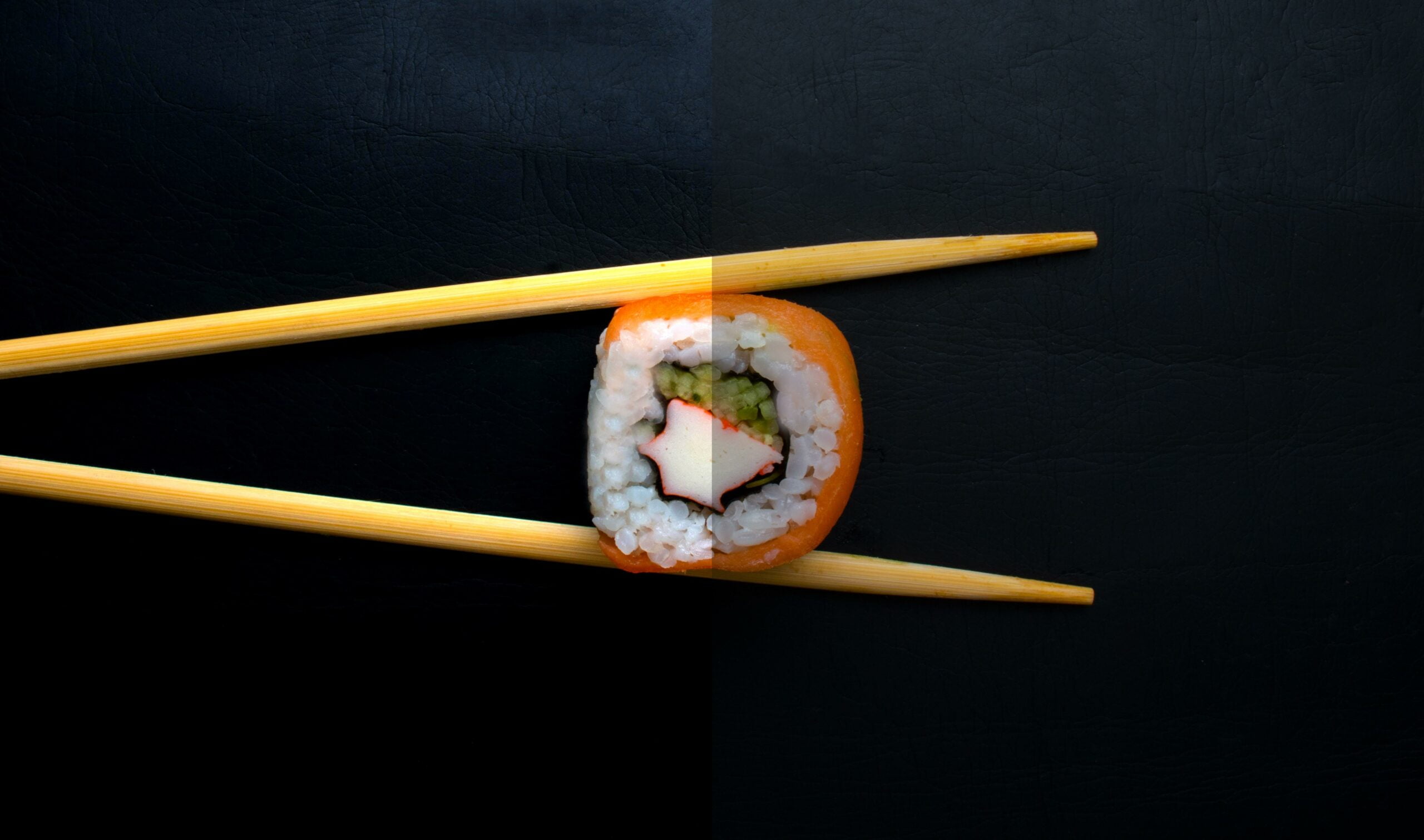Sushi is swimming in health benefits, and it’s no secret that real wasabi comes with a hefty price tag. But did you know that there is so much more to this beloved Japanese delicacy? In this article, we will dive deep into the intricate world of sushi, exploring its fascinating ingredients, techniques, and cultural significance. Get ready to uncover surprising facts and gain a newfound appreciation for the art of sushi. Prepare to tantalize your taste buds and expand your culinary knowledge as we embark on this enlightening journey together.
Facts About Sushi
When it comes to sushi, there’s much more than meets the eye. Beyond the beautiful presentation and tantalizing flavors, this iconic Japanese dish holds a fascinating history and a wealth of surprising facts. So, let’s dive into the world of sushi and uncover the secrets behind its ingredients, techniques, and cultural significance.
1. Sushi: Originating from China, a Preservation Technique Turned Culinary Art
Did you know that sushi actually has Chinese roots? In its earliest form, sushi was a method of preserving fish by fermenting it with rice and salt. The rice acted as a natural preservative, allowing the fish to be stored for extended periods. Interestingly, during this time, the rice was not meant for consumption, but rather discarded, and only the fish was eaten. It wasn’t until much later that sushi evolved into the dish we know today.
“Sushi’s humble beginnings as a preservation technique highlight its transformation into a sophisticated culinary art.”
2. The Evolution of Sushi: A Street Vendor Sparks a Culinary Revolution
The modern iteration of sushi as we know it today took shape in Tokyo around 1824. It was during this time that a street vendor named Hanaya Yohei revolutionized sushi by combining freshly caught fish with vinegar-seasoned rice. This innovative approach allowed the fish to be enjoyed at its peak freshness while enhancing the flavors with the tangy rice. This breakthrough propelled sushi into the mainstream, capturing the hearts and taste buds of people worldwide.
“Hanaya Yohei’s inventive spirit forever changed the course of sushi, introducing a harmonious blend of flavors that delights sushi enthusiasts to this day.”
3. The True Meaning of Sushi: It’s All About the Rice
Contrary to popular belief, the term “sushi” does not refer to the fish itself. In fact, the word “sushi” translates to “sour rice” in Japanese, representing the crucial role of rice in this beloved dish. Sushi rice is carefully seasoned with a mixture of rice vinegar, salt, and sugar, giving it a subtly tangy taste that complements the fish and other ingredients.
“Next time you savor a bite of sushi, remember that this iconic dish finds its name and essence in the delicate dance of sour rice and fresh seafood.”
4. Sushi’s Health Benefits: A Nutrient-Rich Delight
Beyond its exquisite taste, sushi offers a range of health benefits. Fish, a staple ingredient in sushi, is an excellent source of omega-3 fatty acids, which promote heart health and contribute to brain function. Additionally, sushi provides a well-rounded dose of protein, essential vitamins, and antioxidants, making it a nutritious choice for sushi lovers.
“Indulging in incredible flavors while nourishing your body with essential nutrients? Sushi truly is a win-win culinary delight.”
5. The Yin and Yang of Sushi: Health Considerations
While sushi offers numerous health benefits, it’s important to be aware of potential risks. Sushi can harbor parasites, bacteria, and even levels of mercury. However, these risks can be minimized through proper preparation, handling, and hygiene practices. Sushi chefs undergo rigorous training to ensure the fish is safe to consume, and selecting high-quality establishments can further reduce any potential health concerns.
“Sushi’s duality reminds us that like all things, balance is key. By being mindful of preparation and choosing reputable sushi establishments, you can confidently enjoy this delightful delicacy.”
6. Sushi Across Borders: Embracing Diversity in Types and Techniques
Just as culture varies from one country to another, so does sushi. Each nation has put its own spin on this culinary art, resulting in unique sushi styles. For example, Japan is known for nigirizushi, which consists of a slice of fish delicately placed atop a ball of rice. In contrast, countries like the United States have embraced inventive sushi rolls that combine a variety of ingredients to create whimsical and flavorful combinations.
“Sushi’s global journey showcases the beautiful diversity and adaptability of this beloved dish, inviting us to embark on a culinary exploration.”
Whether you’re a sushi connoisseur or a casual enthusiast, uncovering the lesser-known facts about sushi can deepen your appreciation for this beloved cuisine. From its Chinese origins to its cultural adaptations, sushi is a testament to the evolution of culinary arts. So the next time you indulge in a delectable sushi roll, savor not only its flavors but also the rich history and intriguing stories behind each bite.
Note: Table is not required for this section
Facts About Sushi
Sushi, a culinary delicacy originating from Japan, is a fascinating dish that has captivated individuals worldwide. If you’re curious to uncover the intriguing aspects surrounding sushi, then you’re in for a treat. Let’s unveil some facts about sushi in Japan that will surely leave you amazed.
One interesting aspect lies in the meticulous preparation of sushi rice. Did you know that sushi rice, also known as shari, is flavored with a special blend of rice vinegar, sugar, and salt? The unique balance of these ingredients gives sushi its distinctive taste that complements the fresh fish or other toppings.
Another captivating element revolves around sushi chefs. These skilled artisans undergo years of training to master the art of sushi-making. From perfecting the rice texture to ensuring precise fish slicing techniques, sushi chefs epitomize dedication and precision.
When it comes to sushi rolls, innovation takes center stage. While traditional sushi rolls, such as the classic maki or nigiri, continue to be popular, creative variations have emerged. These contemporary sushi rolls offer an array of flavors, textures, and unique presentations, bringing excitement to sushi enthusiasts.
Unraveling the history of sushi reveals a rich heritage dating back centuries. Originating as a method for preserving fish, sushi evolved into an exquisite gastronomic experience. As you delve into the history of sushi, you’ll uncover fascinating stories behind its development and cultural significance.
To experience the allure of sushi, one must explore the enchanting realm of sushi restaurants. These establishments offer a spectrum of sushi delights, ranging from traditional to avant-garde creations. Step into a sushi restaurant and embark on a culinary journey that will tantalize your taste buds.
Now that you’ve been introduced to these captivating facts about sushi, why not delve deeper into each aspect? Discover more about the fascinating world of sushi in Japan, sushi rice preparation, the mastery of sushi chefs, the evolution of sushi rolls, the historical roots, and the vibrant sushi restaurant scene. Click on the respective links below to uncover more!
- Facts about sushi in Japan
- Facts about sushi rice
- Facts about sushi chefs
- Facts about sushi rolls
- Facts about sushi history
- Facts about sushi restaurants
Sushi is swimming in health benefits.
When it comes to health benefits, sushi definitely makes a splash! This beloved Japanese delicacy offers a wide range of nutritional advantages that can leave you feeling satisfied and nourished. From heart-healthy fats to immune-boosting vitamins, sushi is a true powerhouse of goodness. Let’s dive in and explore the amazing health benefits that sushi brings to the table.
Omega-3: A Heart-Healthy Catch
One of the standout health benefits of sushi is its rich content of omega-3 fatty acids. These heart-healthy fats can help lower the risk of chronic inflammation, as well as reduce the chances of developing cancer, diabetes, heart disease, and stroke. Omega-3 fatty acids are known for their anti-inflammatory properties, making them a valuable addition to any diet. With every bite of sushi, you’re not only tantalizing your taste buds but also nourishing your heart.
“Sushi’s abundance of omega-3 fatty acids makes it a catch for maintaining heart health and reducing the risk of inflammatory ailments like cancer, diabetes, and stroke.”
A Boost for Thyroid Health with Nori
Ever wondered what gives sushi that distinct taste and texture? Look no further than the seaweed wrapping called nori. Apart from bringing a delightful crunch to your sushi rolls, nori is also a fantastic source of iodine. This vital mineral plays a crucial role in supporting thyroid health. By including sushi in your diet, you’re giving your body a helping hand in maintaining a healthy thyroid function.
“Nori’s presence in sushi adds more than crunch; it boosts your thyroid health, thanks to its iodine content.”
Vitamin A: A Skin-Healthy Secret
Sushi is not just a treat for your taste buds but also for your skin! This delightful dish contains a good amount of vitamin A, which is essential for maintaining healthy skin and a strong immune system. Vitamin A also helps improve vision and promotes overall well-being. With sushi on your plate, you can indulge guilt-free and give your body a healthy dose of this skin-loving vitamin.
“Sushi’s vitamin A content not only keeps your skin glowing but also fortifies your immune system, making it a delightful treat from the inside out.”
Sushi: A Protein Paradise
Protein is a crucial component of a healthy diet, and sushi provides a delicious way to meet those protein needs. Whether you opt for the classic maki rolls, succulent sashimi, or delectable nigiri, sushi is packed with lean protein. This macronutrient helps you feel full and satisfied, making your meal more enjoyable. Plus, sushi offers options for vegetarians and vegans too, with plant-based proteins like tofu available.
“Sushi is a paradise of protein, leaving you satiated and content with your meal.”
Mindful Choices for a Balanced Diet
It’s important to approach sushi with some mindfulness, especially when it comes to sodium content. While sushi offers an array of health benefits, some types may have higher levels of sodium. It’s essential to choose options that are balanced and watch your portion sizes. Some sushi rolls, like the California roll or avocado roll, can be lower in calories compared to rolls with fried ingredients or mayonnaise. Being mindful of your choices allows you to enjoy sushi as a part of a healthy, well-rounded diet.
“Mindful choices when it comes to sushi ensure a well-balanced and satisfying meal, while keeping an eye on the sodium content and portion sizes.”
Strengthening Gut Health with Sushi
In recent years, the importance of gut health has gained significant attention. Thankfully, sushi can lend a helping hand in this department too. The combination of fermented rice with fish and other delicious ingredients aids in promoting a healthy gut. Fermented foods like sushi help maintain a diverse population of good bacteria in our digestive system, contributing to optimal gut health.
“Sushi contributes to a healthy gut by combining fermented rice with flavorful ingredients, nurturing a diverse community of beneficial bacteria in our digestive system.”
Sushi truly offers more than just a delightful culinary experience. With its stellar lineup of health benefits, including heart-healthy omega-3 fatty acids, iodine-rich nori, immune-boosting vitamins, and gut-loving properties, sushi is a winner when it comes to nourishing your body. So, the next time you indulge in this Japanese delicacy, savor each bite and know that you’re treating yourself to a bevy of health benefits.
Omega-3: A Heart-Healthy Catch Sushi’s abundance of omega-3 fatty acids makes it a catch for maintaining heart health and reducing the risk of inflammatory ailments like cancer, diabetes, and stroke. A Boost for Thyroid Health with Nori Nori’s presence in sushi adds more than crunch; it boosts your thyroid health, thanks to its iodine content. Vitamin A: A Skin-Healthy Secret Sushi’s vitamin A content not only keeps your skin glowing but also fortifies your immune system, making it a delightful treat from the inside out. Sushi: A Protein Paradise Sushi is a paradise of protein, leaving you satiated and content with your meal. Mindful Choices for a Balanced Diet Mindful choices when it comes to sushi ensure a well-balanced and satisfying meal, while keeping an eye on the sodium content and portion sizes. Strengthening Gut Health with Sushi Sushi contributes to a healthy gut by combining fermented rice with flavorful ingredients, nurturing a diverse community of beneficial bacteria.
Real Wasabi Is Expensive
When it comes to sushi, most people are familiar with that signature green paste served alongside their favorite rolls. But here’s a surprising fact: that “wasabi” may not be real wasabi at all. In fact, real wasabi is difficult to grow and expensive to buy, making it a rare and coveted ingredient in the world of sushi.
Real wasabi root is difficult to grow and expensive to buy. Unlike its imitation counterpart made from horseradish, real wasabi is derived from the Wasabia japonica plant. This plant requires specific conditions to thrive, making it the hardest commercial plant to grow in the world. As a result, cultivating real wasabi is a labor-intensive process that demands specialized knowledge and dedication from farmers. Its scarcity and the effort required to grow it contribute to its high price tag.
Most sushi restaurants don’t use real wasabi. Due to its steep cost and limited availability, many sushi restaurants opt for the more accessible horseradish-based alternative. This imitation wasabi may mimic the flavor and appearance of real wasabi to an extent, but it lacks the complexity and nuance that comes from the authentic root. So the next time you enjoy sushi, there’s a good chance you’re not experiencing the true flavor of wasabi.
Fresh wasabi can cost around $200 per kilogram. Real wasabi is a luxury ingredient that comes with a hefty price tag. In fact, fresh wasabi can cost approximately $200 per kilogram. This high cost is not surprising considering the effort and expertise required to cultivate the plant. It’s clear that true wasabi is reserved for those who are willing to pay a premium for its unique taste and quality.
Only around 5-10% of restaurants outside of Japan actually serve real wasabi. If you’re outside of Japan, finding a sushi restaurant that serves real wasabi can be like searching for a needle in a haystack. Due to its rarity and cost, only a small percentage of restaurants worldwide are willing to invest in real wasabi. So, if you’re lucky enough to come across a place that offers this delicacy, consider yourself privileged to indulge in an authentic sushi experience.
Real wasabi has a short lifetime and its flavor disappears quickly. Another reason why sushi restaurants tend to turn to imitation wasabi is the short shelf life of real wasabi. Once the root is grated, its flavor dissipates quickly. To fully appreciate the taste of real wasabi, it must be consumed shortly after preparation. This limited window further adds to the challenges of serving real wasabi in restaurants.
In the world of sushi, not everything is as it seems. While that vibrant green paste may resemble wasabi, it is likely an imitation made from horseradish and green food coloring. Real wasabi is a rare and expensive ingredient that remains elusive for many sushi enthusiasts. Its limited availability and high price only add to its allure, making it a true culinary treasure for those fortunate enough to savor its rich and complex flavor.
“Real wasabi, with its elusive flavor, is a delicacy that only the most discerning sushi connoisseurs can appreciate.”
FAQ
Question 1: What are the health benefits of sushi?
Answer 1: Sushi offers several health benefits, such as being a great source of omega-3 fatty acids, which are heart-healthy fats. It also provides lean protein, which can help fill you up and make your meal more satisfying. Additionally, sushi contains nori (seaweed) that provides iodine, benefiting thyroid health. Sushi is also a good source of vitamin A, important for a healthy immune system and skin. The omega-3 fatty acids in sushi can help reduce chronic inflammation and lower the risk of cancer, diabetes, heart disease, and stroke.
Question 2: Are there any health risks associated with sushi?
Answer 2: While sushi has many health benefits, there are some health risks to consider. Sushi can contain parasites, bacteria, and potentially mercury, which can lead to poisoning. However, these risks can be minimized with proper preparation and hygiene. It’s important to choose sushi that has been prepared and stored correctly to reduce the risk of foodborne illnesses.
Question 3: What are the different types of sushi?
Answer 3: Sushi comes in various forms. Maki rolls consist of fish and other ingredients rolled up in seaweed and rice. Sashimi is thinly sliced raw fish served without rice. Nigiri is a type of sushi that consists of a slice of fish on top of a ball of rice. Additionally, there are other types of sushi rolls that can vary in ingredients and flavors.
Question 4: Is real wasabi commonly used in sushi restaurants?
Answer 4: No, real wasabi is not commonly used in sushi restaurants. It is difficult to grow and expensive to buy. Restaurants often use imitation wasabi made from horseradish and green food coloring as a substitute. Only a small percentage of restaurants outside of Japan actually serve real wasabi due to its high cost and limited availability.
Question 5: What is the flavor of real wasabi like?
Answer 5: Real wasabi has a rich and complex flavor. It offers a spicy and refreshing taste with hints of sweetness. However, the flavor of real wasabi disappears quickly, so it needs to be consumed shortly after being grated to fully experience its unique taste.
- China II Review: Delicious Food & Speedy Service - April 17, 2025
- Understand Virginia’s Flag: History & Debate - April 17, 2025
- Explore Long Island’s Map: Unique Regions & Insights - April 17, 2025
















